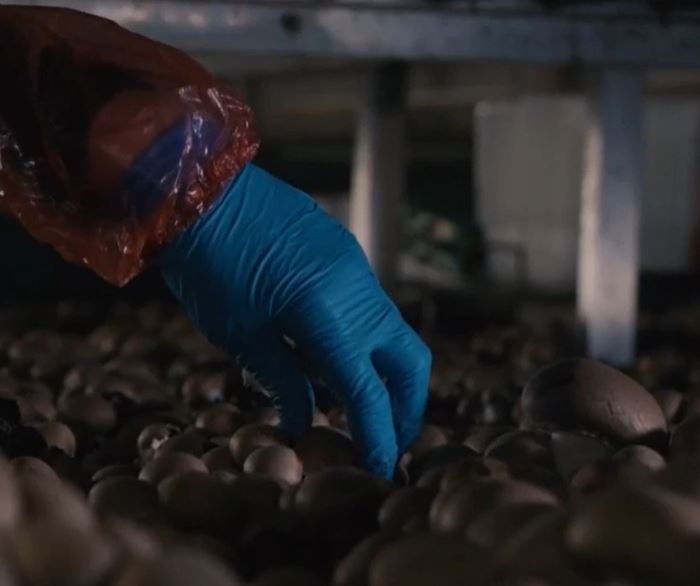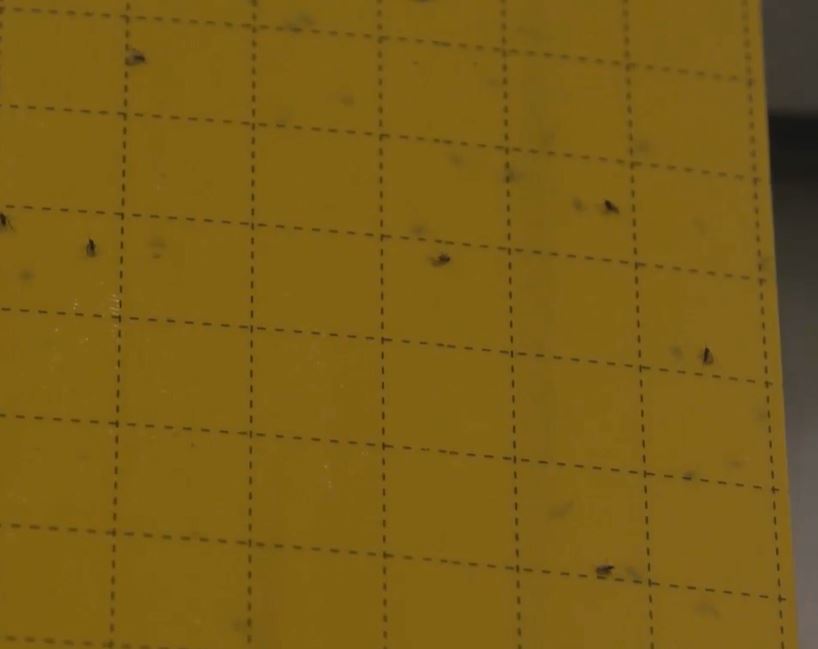Please click here to access the main AHDB website and other sectors.
- Home
- Knowledge library
- Controlling fungal diseases in mushrooms
Controlling fungal diseases in mushrooms
Detecting fungal diseases early helps growers avoid severe damage to mushroom crops. Read recommendations for preventing, monitoring and reacting quickly to evidence of fungal disease.
To prevent outbreaks of fungal disease, you need to make sure there is no build-up of contaminated debris or dust on the farm. You can do this by putting several permanent prevention and control measures in place. Sticking to these will greatly reduce your risk of fungal disease taking hold.
How to limit contamination and spread
Once disease is detected on a farm, you need to act quickly to limit the spread. Here are some measures you can take:
- Train harvesters to progress from picking first flushes, followed by second flushes and finishing with third flushes – generally, the first and second flushes are the cleanest
- Harvesters should start the day with clean overalls, a supply of disposable gloves, and cleaned and disinfected picking tools (knives, buckets, weighing scales)
- Picking equipment (tables, stools, trolleys, platforms) should not be moved from room to room but remain for the full duration of a crop
- Alcohol hand gel should be used on entry and exit to every room, to minimise the spread of disease around the farm
- Disinfectant foot dips or mats should be placed at the entrance to every room and used on entry and exit
- Keep growing room walls and ceilings in good condition, especially where they meet – coatings need to be controlled and repaired, if needed, at least every three years
- Make sure all door seals and vents are in good condition – smooth, sealed surfaces are easier to clean
- Gently clean and disinfect growing room floors with low-pressure water between flushes to reduce the build-up of contamination
- Disinfect all growing room door handles (inside and out), as well as control panels, surfaces in canteen areas, rest rooms, offices, etc.
- Clean and disinfect concrete aprons and floors outside growing rooms at the end of every day
If the third flush is heavily infected, consider terminating the crop early or allocate a dedicated picker for third flushes only. Disposable clothing (overalls, gloves, hair net, overshoes) should be used and then placed in disposal bags and left in the room to be cooked out with the crop.
Watering diseased crops
Watering can spread diseased spores onto adjacent crops and surfaces, which can then contaminate harvesters’ hands, footwear and clothing.
You should only water crops once they’ve been scanned for disease and after you’ve treated any diseased areas. Don’t water between flushes if disease levels are high.
If there is Cobweb disease in your crops, turn off your air circulation fans while treating it and when watering.
Tips for fly control
Fly control is important when it comes to Dry Bubble disease. That’s because the sticky spores attach to flies, which can then transport them from room to room through vents and open doors, and out onto the rest of the farm.
What to do:
- Use sticky fly traps to monitor fly numbers throughout the duration of a crop
- Use approved fly control products to reduce populations
Ensure rooms are well sealed and doors kept closed, where possible
How to prevent casing contamination
Many disease outbreaks occur due to contaminated casing. This can happen before, during or just after the casing operation. The main sources of contamination are machinery, people, dust and flies.
To prevent casing contamination:
- Wash and disinfect all casing equipment just before use
- Clean and disinfect the concrete aprons adjacent to the casing operation and keep them kept damped down to reduce wind-blown dust
- Make sure people carrying out casing operations have no contact with the rest of the farm before starting – consider a dedicated changing room for workers
- Provide casing operatives with clean overalls, disposable gloves and white boots reserved for casing operations only
- Avoid power washing while casing is in progress, as this can spread contamination
- If you’re storing casing for future use, make sure it’s well protected from dust and flies
How to prevent early crop contamination
Debris left behind after filling and casing is a potential source of infection.
To prevent early crop contamination:
- Clean away debris carefully using low-pressure water and a floor scraper
- Check there are no poorly sealed doors or vents allowing dust or flies in
- Keep growing room doors shut to minimise the risk of infection
Monitoring for fungal disease
Before harvesting begins, trained disease personnel must monitor, record and treat any incidences of disease appearing before the first flush. Disease that occurs before first flush indicates high disease pressure at casing time and a high level of background contamination on the farm.
All hygiene measures should be reviewed for weaknesses, and all harvesters should be trained to spot symptoms and report outbreaks immediately.
Recommended end of crop routines
Before emptying
The best end of crop treatment is steaming out the room before emptying. Do this at 65–70°C for a minimum of 8 hours.
Where steam cook-out isn’t possible, the crop and floors should be sprayed with an approved disinfectant and allowed to stand for an hour before emptying.
After emptying
Concrete floors are unlikely to reach high enough temperatures during cook-out to kill disease pathogens, so clean and disinfect growing room floors after emptying.
Clean growing room shelves and netting thoroughly. Lay the clean nets on shelves and re-steam the empty growing room and nets at 65°C for 2–8 hours. This is especially important if you’ve had serious levels of disease in a third flush or if you’ve identified Trichoderma aggressivum or mushroom virus diseases.
Wash and disinfect the floors, shelving, netting and walls of the room again. Disinfect the concrete areas outside the growing room and remove spent compost from the site as soon as possible.
Useful links
Fungal diseases: Dry Bubble Disease

An example of a hygiene measure to reduce the risk of contamination and spread: using clean, disposable gloves and sleeves whilst picking

An example of a yellow sticky trap used to help with fly control

